10 Interesting Facts About Neptune You Never Knew (2024 Updates)
Last Updated on
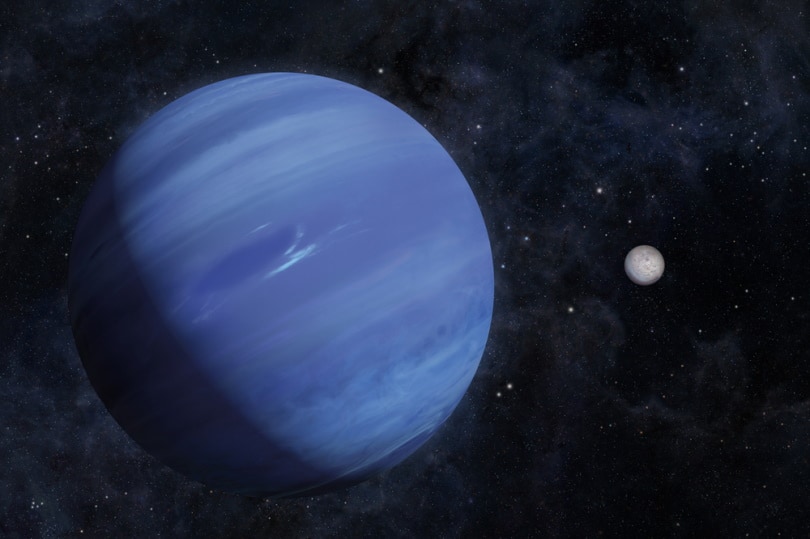
Neptune is the eighth planet from the Sun and the most distant planet in our solar system. Because it is so far away, not much is known about this gaseous ice giant named after the Roman god of the sea. The planet’s astronomical symbol ♆ represents Neptune’s trident, the weapon of choice for this classical mythological god.
This fascinating world is characterized by ferocious winds and a deep, brilliant blue color which is due to its helium, hydrogen, ammonia, and methane composition. Neptune is a truly unique and otherworldly planet full of wonder, gas, and ice. We have compiled 10 of the most surprising facts about Neptune, so keep reading to learn more about this distant and enthralling planet!

Interesting Facts About Neptune
1. One Neptunian Year Is Equal to 165 Earth Years
As the farthest planet from the Sun, Neptune has a wide, elliptical orbit that keeps it roughly 2.8 billion miles from the Sun on average. Since Neptune is about 30 times farther from the Sun than the Earth, it cannot be observed with the naked eye. As such, Neptune is the only planet to have been discovered through mathematical prediction rather than empirical observation. Because Neptune is so far from the Sun, it has a relatively slow orbital velocity of roughly 3.38 miles per second. This contributes to Neptune’s extremely long year, which is equal to about 165 Earth years.
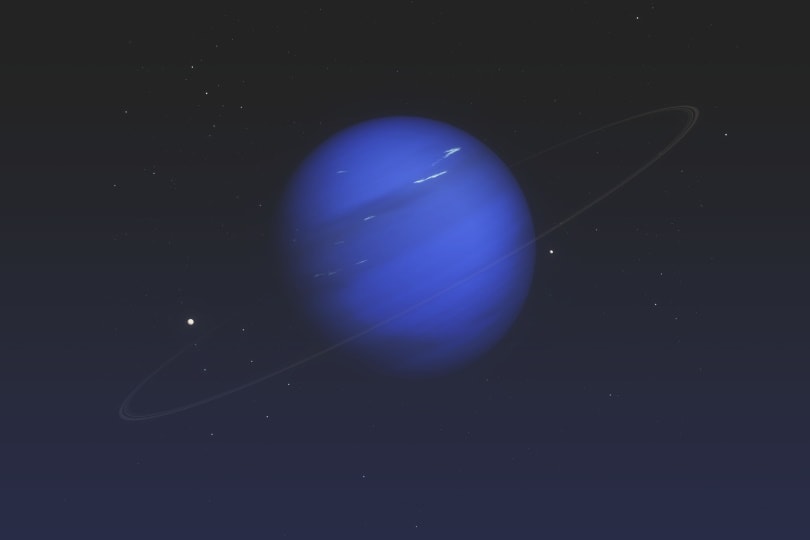
2. Neptune Experiences Seasons
Like the Earth, Neptune experiences dynamic seasons due to its axial tilt, which is 28.32° relative to the Sun’s ecliptic, or orbital plane. This axial tilt causes one of Neptune’s hemispheres to receive more sunlight than the other, initiating its seasonal changes. Because Neptune has such a long year, each season lasts a mind-boggling 40 years, making it challenging to observe the seasonal changes that the planet undergoes.
However, we have observed a Neptunian summer, which is characterized by a wider and brighter cloud cover due to the effects of solar heating and radiation. No matter how far we venture into the depths of our solar system, it is comforting to know that even the most distant planets are similar to our home planet, Earth, in their own unique ways.

3. Neptune Is One of the Windiest Worlds in Our Solar System
Neptune is so far from the Sun that it receives little sunlight to help warm, drive, and regulate its atmosphere. Because of this, Neptune is the windiest world in our solar system, with wind speeds reaching an astonishing 1,500 mph.
Scientists theorize that the extremely frigid temperatures and fluid gasses in Neptune’s atmosphere reduce friction enough to generate these astounding winds. The wind speed on Neptune varies between the cloud tops, equator, and poles, with most of the winds moving in a direction opposite to the planet’s rotation. At high latitudes, the winds move with the planet’s rotation; however, at lower latitudes, the winds move in a retrograde pattern.
Neptune even has violent storms, which pop up and disappear over a period of years. These vortex structures show up as dark spots, similar to Jupiter’s Great Red Spot. As these dark spots migrate closer to the equator, they have been observed to disappear, although scientists think these spots still maintain cyclone-like tendencies.
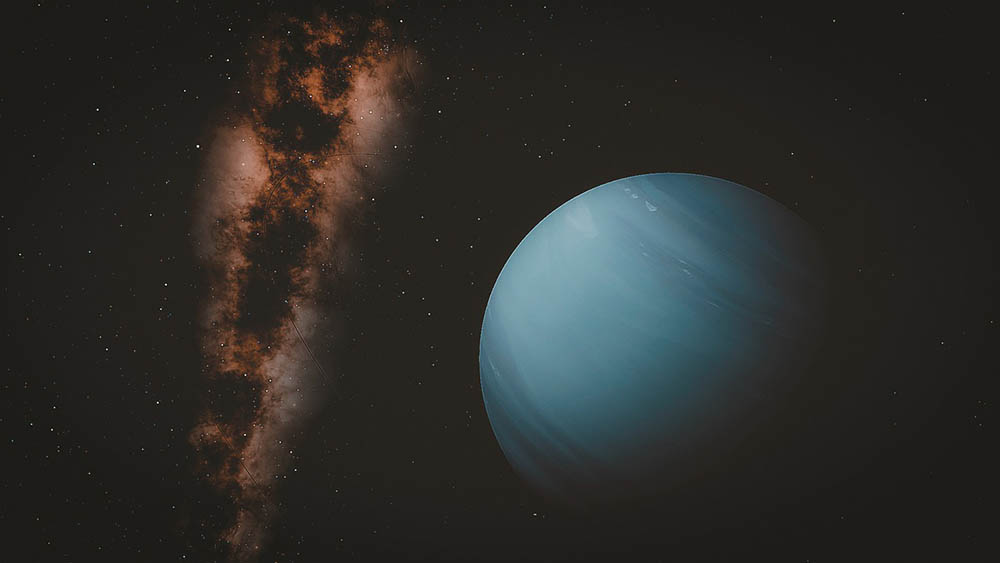
4. Neptune Has a Surface Gravity Similar to Earth’s
Neptune is a ball of icy gas, so standing on its surface would be completely impossible and lead to you gradually sinking towards its rocky core. On Earth, the acceleration due to its gravity is roughly 32.17 , but on Neptune, it is 36.58 , which constitutes only a 17% difference.
Although Neptune has a mass 17 times greater than Earth, it is also about 4 times larger than our home planet. Essentially, this means Neptune’s mass is spread out over a larger volume, leading to a “surface” gravity very similar to that of Earth.

5. Neptune Has 14 Moons
To date, 14 moons have been discovered orbiting Neptune, all of which are named after sea gods and nymphs from Greek mythology. Some of these include Naiad, Thalassa, Despina, Proteus, Halimede, Laomedeia, and Triton, Neptune’s largest and only circular moon.
Neptune’s 7 inner moons are considered to be “regular” because they have circular orbits along Neptune’s equatorial plane and move in the same direction as Neptune. The next 6 moons are considered to be “irregular” and are unique because they have highly elliptical orbits that are often retrograde and far out from the planet. The exception is Triton, which has a circular orbit very close to Neptune, albeit having an inclined, retrograde orbit.
Because Triton has a retrograde orbit, scientists think that it may have once been a dwarf planet that Neptune’s gravity captured over time. In fact, Neptune is still actively pulling Triton closer and closer to it. This will inevitably lead to Triton being ripped apart by Neptune’s gravity, with the remnants likely joining Neptune’s rings.
Triton is also one of the coldest places in the solar system, with temperatures regularly reaching -391 °F. However, spacecraft have detected geysers shooting icy material out of the moon to heights of more than 5 miles, leading scientists to believe Triton has a warm interior. This also led them to hypothesize that Triton may have an icy, subsurface ocean.
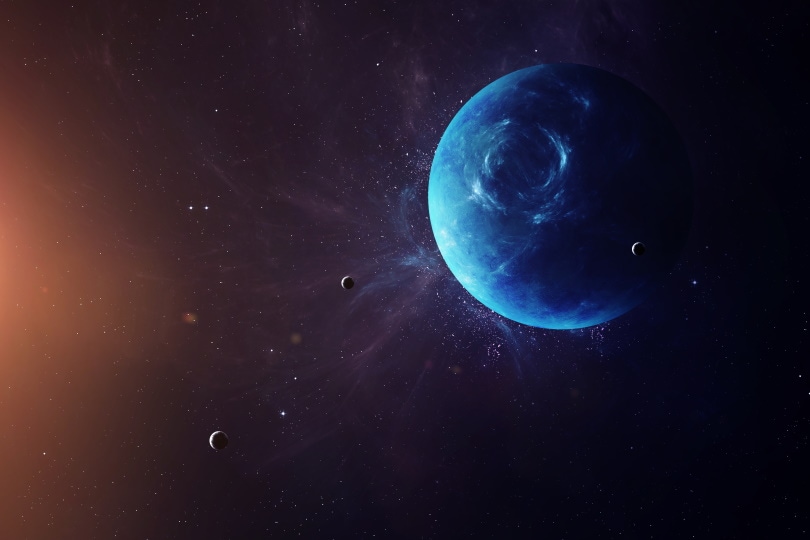
6. Neptune Has a Planetary Ring System
Like the rest of the gas giants in our solar system, Neptune has a planetary ring system, which was definitively confirmed by the Voyager 2 space probe in 1989. Neptune has five rings, including the Galle, Le Verrier, Lassell, Arago, and Adams rings, all named after astronomers who made significant discoveries about the planet.
Because Neptune’s rings are primarily made up of submicrometer dust and small rocks, they are exceptionally dark and difficult to observe. The outermost and most famous of Neptune’s rings is the Adams ring, which was named after John Couch Adams, one of the co-discoverers of Neptune. At only about 21.75 miles wide, the Adams ring is unique due to its five arcs, which are named Fraternité, Égalité 1, Égalité 2, Liberté, and Courage. These arcs are characterized by clumps of ring material grouped together, which scientists cannot explain because they do not adhere to Newton’s laws of motion.
Theoretically, the rings should distribute the material throughout them in a uniform fashion, which isn’t the case in the Adams arcs and is an ongoing mystery. Scientists believe that Neptune’s rings were formed relatively recently and are young in comparison to the age of the solar system. Likely, they were created when one of Neptune’s previous moons got too close to the planet, where it was seized and torn apart by Neptune’s intense gravitational pull.
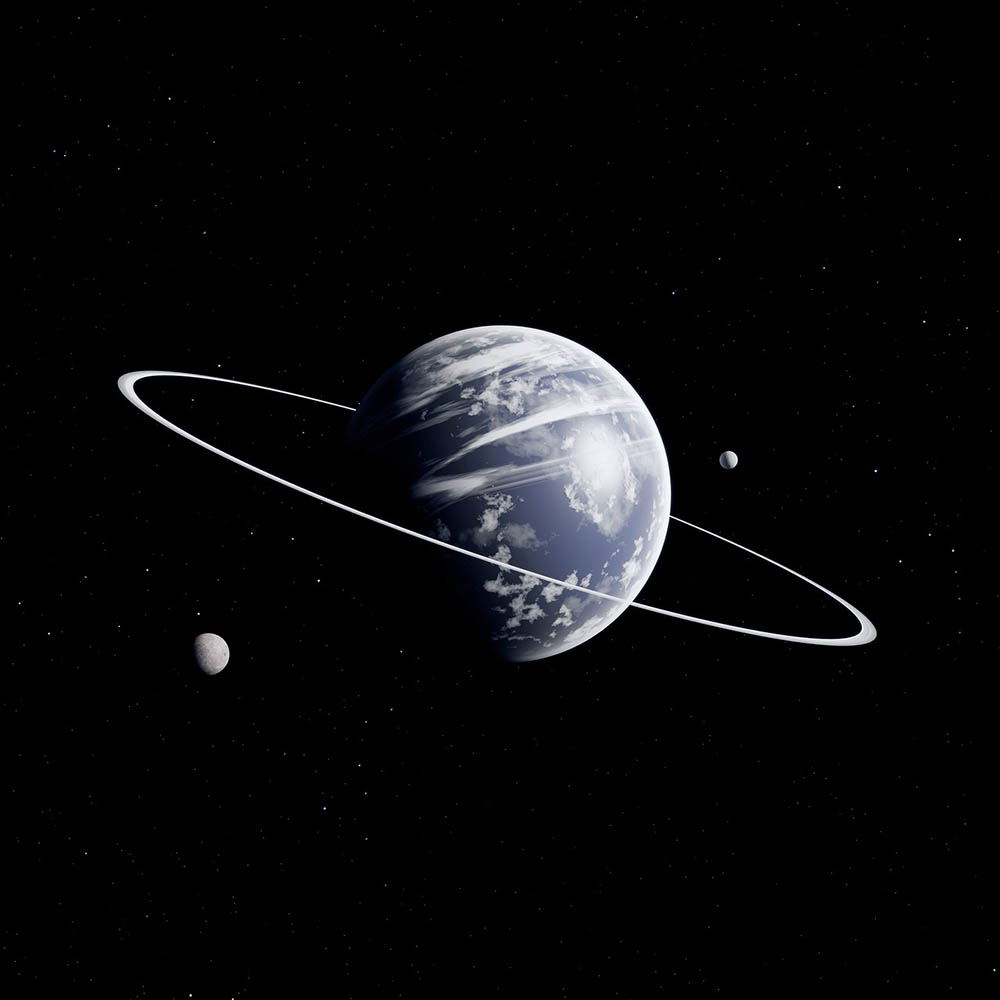
7. Only One Spacecraft Has Ever Visited Neptune
The only spacecraft to visit Neptune up close was NASA’s Voyager 2 space probe, which took advantage of a rare planetary alignment to study the outer solar system and interstellar space. Voyager 2 was designed to study the outer gas giant planets, including Jupiter, Saturn, Uranus, and Neptune. When the probe arrived at Neptune, it discovered six new moons (Proteus, Larissa, Despina, Galatea, Thalassa, and Naiad), four planetary rings, and a “Great Dark Spot,” evidence of a huge cyclone on the planet.
Voyager 2 was equipped with various sensitive scientific instruments to record magnetic, atmospheric, and lunar data and was powered by three plutonium dioxide radioisotope thermoelectric generators (RTGs). Thanks to Voyager 2’s “grand tour” of the solar system, scientists obtained spectacular, never-before-seen images of Neptune and Triton. Although the discoveries made by Voyager 2 were enlightening, currently, there are no plans to visit Neptune again.

8. It Might Rain Diamonds on Neptune
For nearly 40 years, astronomers and physicists have hypothesized that it rains diamonds deep within Neptune. In the depths of Neptune, pressures are more than one million times stronger than on Earth, which compresses ice into a dense and super-hot fluid. Under these extreme conditions, the ammonia and methane within Neptune become chemically reactive. This is thought to cause the separation of hydrocarbons like methane, which is compacted into the most stable form of carbon, diamonds.
Since diamond is much denser than the rest of Neptune, it is hypothesized that it sinks towards Neptune’s core, forming a thick layer of diamond around it. In 2017, scientists recreated the conditions deep within Neptune in a lab, which caused the formation of diamonds. Although scientists are not completely sure of diamond rain on Neptune, this experiment was groundbreaking and supported their hypothesis.

9. Neptune Is the Smallest of the Gas Giants
When compared to its sisters Jupiter, Saturn, and Uranus, Neptune is the smallest gas giant in terms of equatorial radius. Neptune clocks in at a relatively small radius of about 15,387.64 miles, which is interesting considering it is actually 18% more massive than Uranus. This is due to Neptune’s density, which is actually the highest among the gas giants at roughly 102.26 pounds per cubic foot.

10. Neptune Is the Coldest Planet in the Solar System
The frigid temperatures on Neptune are no joke and would flash freeze virtually anything within an instant. Neptune is the coldest planet in the solar system, which makes sense considering it is the furthest planet from the Sun. At Neptune’s cloud tops, the temperature was measured to be around -366.6 °F, which is almost three times the coldest temperature ever recorded on Earth. However, as you venture further into Neptune’s depths and the pressure rises, so does the temperature. At its core, Neptune can reach temperatures up to 12,632 °F, comparable to the surface of the Sun.
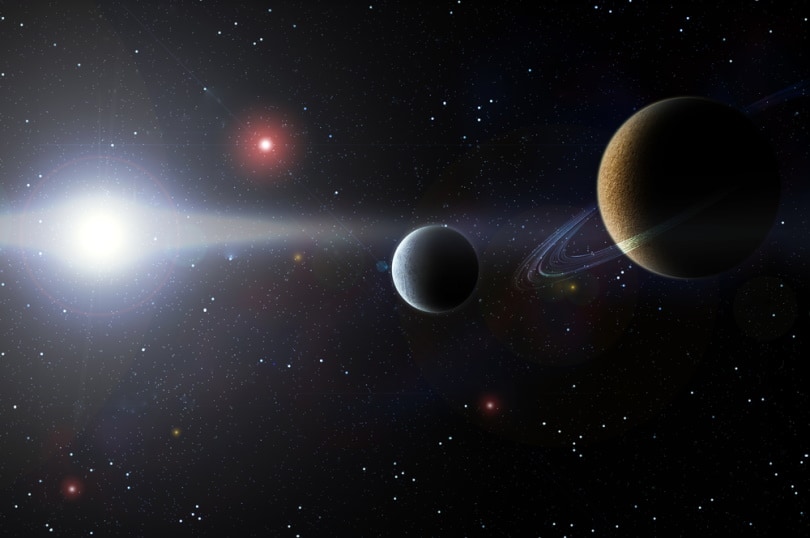

Summary
Neptune is a wondrous planet that hides many secrets from us and is the epicenter of many cosmological mysteries. This otherworldly planet is characterized by a brilliant and saturated azure blue color, multiple rings, rain of diamonds, vicious winds, and some of the greatest temperature variations between its cloud tops and core. This planet of extremes lies on the outskirts of our solar system, posing a huge challenge to astronomers and scientists attempting to study its properties.
Because Neptune is so far away, only one spacecraft has visited it up close. This space probe, known as Voyager 2, made many discoveries and unraveled decades of the mysteries regarding Neptune’s rings, moons, and weather conditions. Although Voyager 2 provided scientists with invaluable and precious data, there are no current plans to revisit this distant ice giant.
Neptune is one of the most fascinating planets in our solar system, with many scientists believing it may hold the key to unlocking the mysteries of our solar system’s formation. Who knows what we might find if we send another advanced and sensitive spacecraft to Neptune?
Featured Image Credit: Pavel Gabzdyl, Shutterstock
Table of Contents
- Interesting Facts About Neptune
- 1. One Neptunian Year Is Equal to 165 Earth Years
- 2. Neptune Experiences Seasons
- 3. Neptune Is One of the Windiest Worlds in Our Solar System
- 4. Neptune Has a Surface Gravity Similar to Earth’s
- 5. Neptune Has 14 Moons
- 6. Neptune Has a Planetary Ring System
- 7. Only One Spacecraft Has Ever Visited Neptune
- 8. It Might Rain Diamonds on Neptune
- 9. Neptune Is the Smallest of the Gas Giants
- 10. Neptune Is the Coldest Planet in the Solar System
- Summary
About the Author Robert Sparks
Robert’s obsession with all things optical started early in life, when his optician father would bring home prototypes for Robert to play with. Nowadays, Robert is dedicated to helping others find the right optics for their needs. His hobbies include astronomy, astrophysics, and model building. Originally from Newark, NJ, he resides in Santa Fe, New Mexico, where the nighttime skies are filled with glittering stars.
Related Articles:
15 Crucial Facts About Ultraviolet Rays & the Sun
What Constellation Is Spica In? The Interesting Answer!
10 Interesting Leo Constellation Facts, Myths, and FAQs
15 Interesting Pegasus Constellation Facts, Myths, and FAQs
6 Interesting Sagittarius Constellation Facts, Myths, and FAQs in 2024!
What Are Constellations? Where Did They Come From?
8 Interesting Libra Constellation Facts, Myths, and FAQs
What Is Infrared Radiation? Science-Based Facts & FAQ
